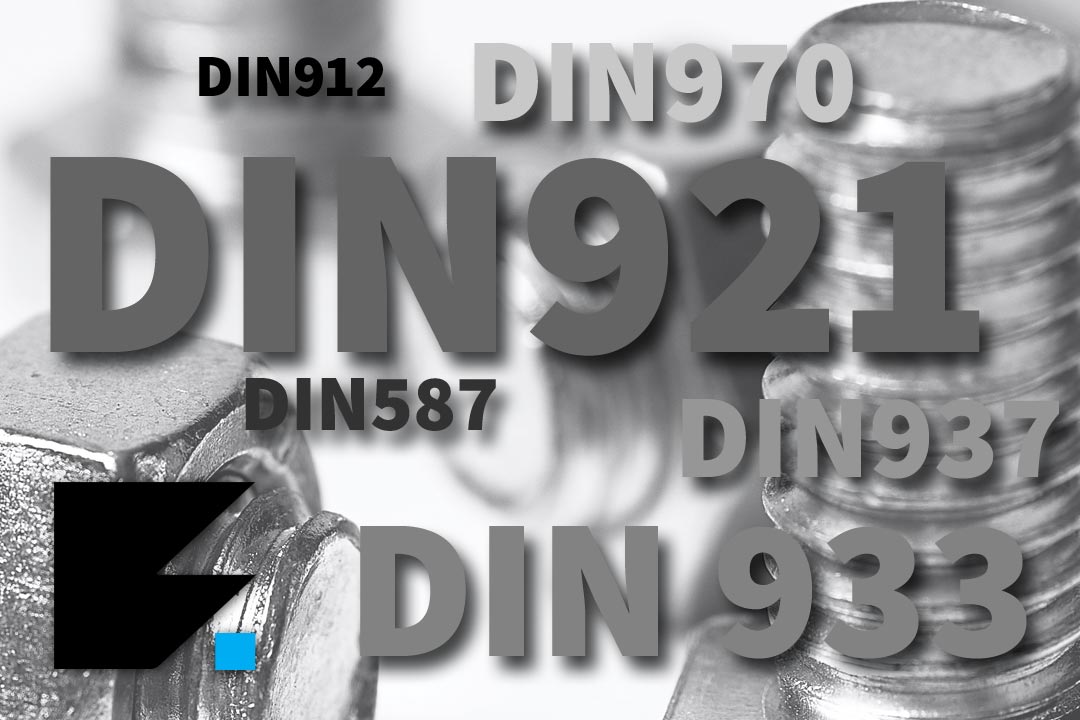DIN numbers are markings that indicate the standard used to produce a specific fastener. The DIN number is a metric standard to which the fastener can be recognised across the world.
What Is A DIN Number?
A DIN number is a standard that was established by the Deutsches Institut für Normung (DIN), which helps us identify specific standards of fixings and fasteners to ensure that no matter where we buy from, we know that the fasteners we are buying are manufactured to a specific criteria and are compatible with one another.
The DIN number consists of a DIN code followed by a number that is used to identify the specific standard.
Metric bolts and screws will have a metric DIN number, such as DIN 933 for a fully threaded hex bolt/set screw), or DIN 571 for an M8 coach screw.
The same standards are used across threaded rods such as the M12 threaded rod standard being DIN 976-1.
DIN numbers are used to ensure that the correct type of fastener is being used for a particular application. For example, all DIN 933 bolts will be compatible with DIN 934 nuts if they are the same size.
The DIN standard includes dimensions such as thread pitch, head size, and head height. For example, full thread bolts are typically used in applications where a high degree of precision is required, particularly M14 fully threaded bolts (DIN 933) which are quite commonly found in the automotive industry.
The DIN standard given to a bolt is the same no matter its material composition. For example, stainless steel coach bolts are the same DIN 603 as mild steel coach bolts.
DIN Number Chart
Here's a chart of Fixabolt's DIN numbers & measurements for popular bolts:

Advantages of using DIN numbers
Using DIN numbers to specify fasteners has a number of advantages. Some key benefits include:
-
Compatibility with international standards: DIN numbers are widely recognised and used around the world, making it easier to find and source compatible fasteners regardless of where you are and where you're buying from. This is particularly important for industries that require compliance with international standards, such as the aerospace and automotive industries.
-
Increased accuracy: By using a standardised system for identifying fasteners, engineers and designers can be confident that the fasteners they select will meet the required specifications and be appropriate for the application, particularly when used in combination of other fasteners that have their own DIN number. This helps to reduce the risk of errors or inconsistencies in the design or assembly process.
-
Ease of use: Once you understand how to read a DIN number, it's easy to quickly identify the properties and specifications of a fastener. This can save time and effort when selecting and sourcing fasteners for a project, particularly when importing from overseas.
-
Wide range of fastener types: DIN standards cover a wide range of fastener types, including bolts, screws, nuts, and washers. This means that there is likely a DIN-compliant fastener available for almost any application, making it easy to find the specifications that match a desired DIN number.
-
Improved quality control: Manufacturers can help to ensure that the fasteners they use meet the required standards and are of high quality. This can help to improve the overall reliability and safety of the products they produce.
Overall, using DIN numbers to specify fasteners can help to ensure accuracy, compatibility, and reliability in a wide range of applications.
Whether you're a professional engineer or a DIYer, understanding and using DIN numbers can help you select the right fastener for its purpose.
Other Methods of Bolt Categorisation
DIN numbers are just one of the many ways that fasteners can be categorised.
Other globally standardised bolt categorisations include:
- ANSI (American National Standards Institute) standards
- JIS (Japanese Industrial Standards)
- ISO (International Organisation for Standardisation) standards.
When ordering fasteners, it is important to specify the DIN number to ensure that the correct type of bolt is supplied.

